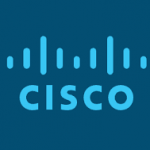
#DigitalCitizen Series: A Day on the Bay
We are entering a new era in the life of the Internet. The Internet of Everything is paving the way to a digital era where a proliferation of network-connected objects, processes, people – and the huge amounts of data that will be created – can truly change our world.
So today, by way of an example, let’s take a look at a connected port and the benefits for the associated city, for port operators, for business customers, and for end consumers.
Today’s ports play a critical role in the global economy, and are at the heart of world trade and the movement of goods. Ports in the United States alone move over $1.3 trillion in cargo annually. Any disruption – whether because of a criminal act or simple operational inefficiency – may be a detriment to the global economy.
But city port authorities face increased safety and security regulations and mandates while, at the same time, needing to reduce costs and improve operational efficiency. Additionally, and importantly, real-time data collection and exchange across vessels, ports, cargo and logistics are providing new revenue streams. Local businesses can gain a competitive advantage, and cities can open up new economic opportunities and new markets, by embracing the Internet of Everything on a digital transformation journey.
For today’s blog, our digital citizen will be experiencing a full day of activity on the waterfront.
First, we’ll go to work. It is prime time for unloading the large volume of shipping containers coming through the city’s port. As a city port official, our citizen spends the morning looking not only at today’s capacity, but also at associated business process to make sure what works today can be scaled for the future. Like Hamburg’s smartPORT project, the ultimate goal is to integrate separate transport networks into a more intelligent, proactive, and joined-up port operation. This means our citizen can look at how ship arrivals will affect street and rail traffic, can manage bridge closures and roadway congestion, and allow real-time data to monitor and control these processes.
As a veteran of the shipping industry, our citizen sees containers that are the same size as 30 years ago. But the ships that carry them keep getting larger and larger. For ports all around the world, trying to move ships in and out as quickly as possible is a problem. But not for our digital citizen. Adopting a fully digital strategy, with everything connected to the network, allows automation of operations and logistics, and integration of previously siloed technologies. Every step of the journey can be easily monitored. Like for the Port of Long Beach in California, the end result is speed – loading and unloading is quicker and ships move in and out of the port much faster – and an improvement in the port’s bottom line through lower operational costs, increased efficiency, and improved workplace safety.
After a long day of work our digital citizen has time to relax. Our citizen can now wander along the bay to a beautiful, sustainable new community of parks, public spaces, and shops. This is much like Waterfront Toronto, which has the mission to put Toronto at the forefront of global cities by cleaning up industrial areas in order to spur economic growth, and change the image of the city. Our citizen takes advantage of a bustling digital marketplace, allowing residents to support their own neighborhood and local economy. Widespread wireless network availability at the waterfront brings tangible benefits to residents, businesses, and visitors alike – increasing the overall quality of life and the community experience.
A digital approach, based on the Internet of Everything, will allow for the coordination of all aspects of harbour, port and waterfront operations, so transforming port cities. This digital transformation will allow connected and sustainable communities to thrive alongside the economic vitality of their associated port and transport systems.
Next Stop
Stay tuned for next week’s post to discover more information about the meeting our citizen’s had with community’s Chief Information Officer (CIO). And be sure to check back each week as we explore new themes, challenges and observations.
Additionally, you can click here and register now to get your IoE questions answered on how to become the next digital community.
Finally, we invite you to be a part of the conversation by using the hashtag #DigitalCitizen and by following @CiscoGovt on Twitter.
For more information and additional examples, visit our Smart+Connected Communities page and our Government page on Cisco.com.
Tags:- #DigitalCitizen
- #DigitalTransformation
- #SmartConnectedCity
- Government
- Internet of Things (IoT)
- public sector
- smart cities
- Smart+Connected Communities
2 Comments




Cosumerism is the most destructive force in the world today and international companies are often prime examples of amoral or immoral behaviour.
The deconstruction of consumer durables, mainly by the Chinese,for shipment to distant parts of the world in flat packs, and in containers, is an extraordinary, and valuable, development of international trade, and consumerism.
Re-constructing them can be more difficult!